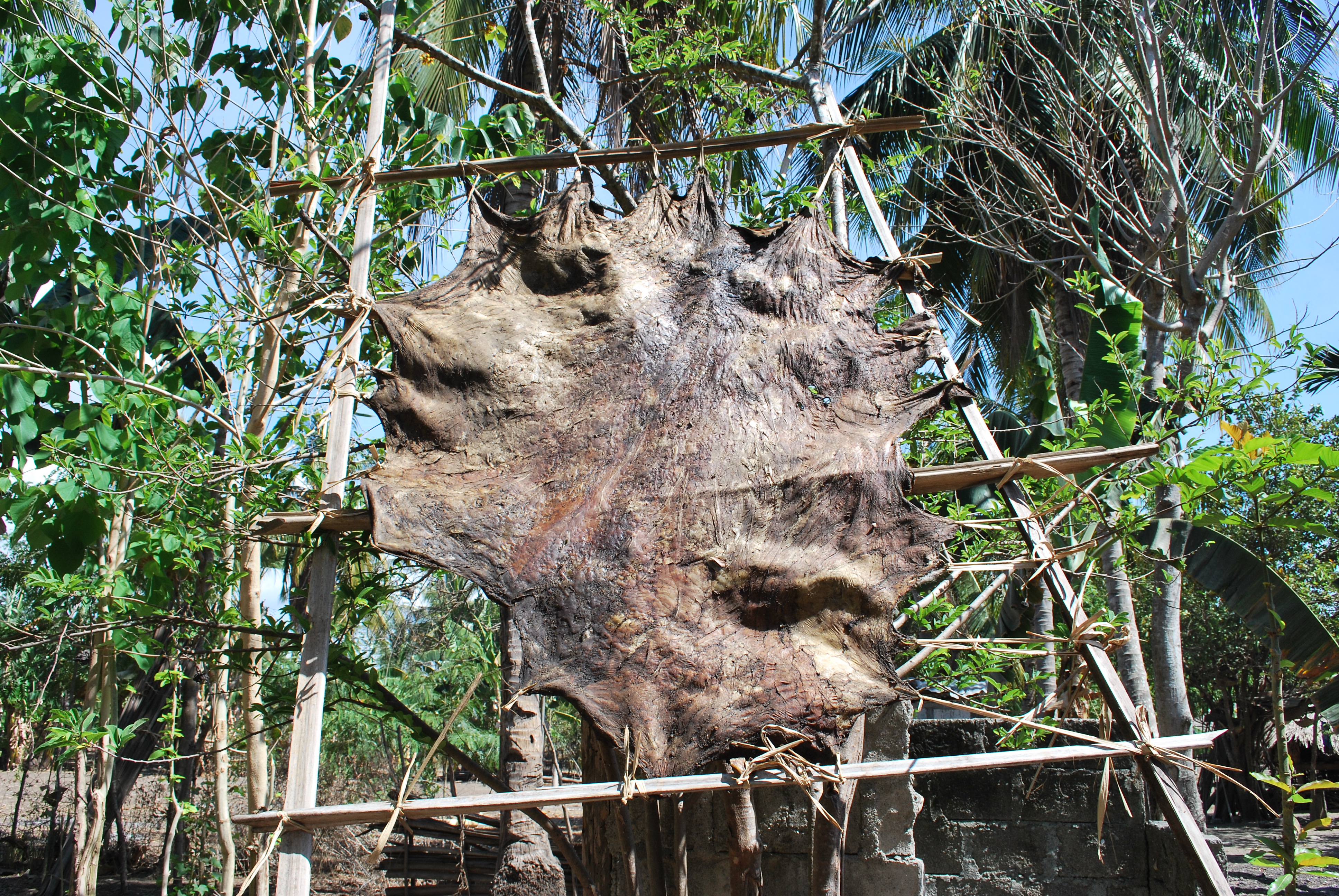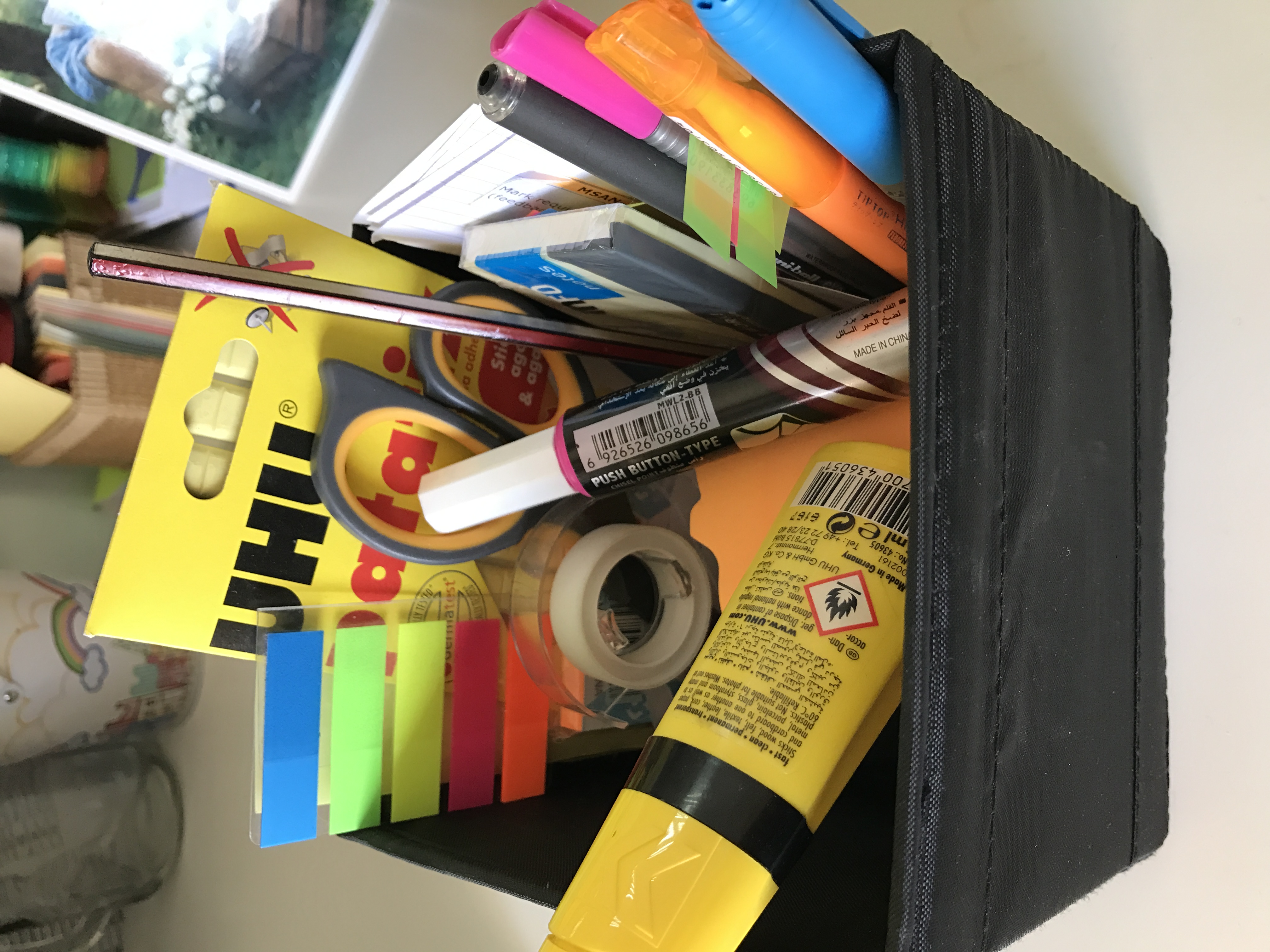|
Crayons
A crayon (or wax pastel) is a stick of pigmented wax used for writing or drawing. Wax crayons differ from pastels, in which the pigment is mixed with a dry binder such as gum arabic, and from oil pastels, where the binder is a mixture of wax and oil. Crayons are available in a range of prices, and are easy to work with. They are less messy than most paints and markers, blunt (removing the risk of sharp points present when using a pencil or pen), typically non-toxic, and available in a wide variety of colors. These characteristics make them particularly good instruments for teaching small children to draw in addition to being used widely by student and professional artists. Composition In the modern English-speaking world, the term crayon is commonly associated with the standard wax crayon, such as those widely available for use by children. Such crayons are usually approximately in length and made mostly of paraffin wax. Paraffin wax is heated and cooled to achieve the correc ... [...More Info...] [...Related Items...] OR: [Wikipedia] [Google] [Baidu] |
Binney & Smith
Crayola LLC, formerly the Binney & Smith Company, is an American manufacturing and retail company specializing in list of art media, art supplies. It is known for its brand ''Crayola'' and best known for its crayons. The company is headquartered in Forks Township, Northampton County, Pennsylvania, Forks Township, Pennsylvania in the Lehigh Valley region of the state. Since 1984, Crayola has been a Wholly Owned Subsidiary, wholly owned subsidiary of Hallmark Cards. Originally an industrial pigment supply company, Crayola soon shifted its focus to art products for home and school use, beginning with chalk, then crayons, followed later by colored pencils, marker pen, markers, paints, modeling clay, and other related goods. All Crayola-branded products are marketed as toxicity, nontoxic and safe for use by children. Most Crayola crayons are manufactured in the United States. Crayola also produces Silly Putty and a line of professional art products under the 'Portfolio Series brand', ... [...More Info...] [...Related Items...] OR: [Wikipedia] [Google] [Baidu] |
Colin Snedeker
Colin M. Snedeker (January 5, 1936 – October 22, 2016) was a British-born American chemist best known as the inventor of the first washable crayons. Snedeker developed the washable crayon while working as a chemist for Binney & Smith, which was the parent company of Crayola crayons at the time, in response to complaints from parents and consumers. He won the patent for the washable solid marking composition utilized in the crayons in 1990. He also developed products for Kiwi shoe polish and DuPont. Biography Snedeker was born in Newcastle upon Tyne in North East England on January 5, 1936. His grandfather had been killed in a fire before he was born and an English couple had adopted Snedeker's father when he was 13-years old. Colin Snedeker and his sister, Ann, were raised in England. They discovered letters from their father's birth family, who lived in Pennsylvania, in 1948, and soon were invited to visit them in the United States. Colin Snedeker entered high school at ag ... [...More Info...] [...Related Items...] OR: [Wikipedia] [Google] [Baidu] |
Conté
Conté (; ), also called the Conté stick or Conté crayon, is a drawing medium composed of compressed powdered graphite or charcoal mixed with a clay base, square in cross-section. It was invented in 1795 by Nicolas-Jacques Conté, who created the combination of clay and graphite in response to the shortage of graphite caused by the Napoleonic Wars (when the British naval blockade of France prevented import). Conté crayons had the advantage of being cost-effective to produce, and easy to manufacture in controlled grades of hardness. They are now manufactured using natural pigments (iron oxides, carbon black, titanium dioxide), clay (kaolin), and a binder (cellulose ether). Conté crayons are most commonly found in black, white, and sanguine tones, as well as bistre, shades of grey, and other colors. Colors sets are especially useful for field studies and color studies. Some artists create entire paintings with them, using them more like pastels than like a drawing med ... [...More Info...] [...Related Items...] OR: [Wikipedia] [Google] [Baidu] |
Edwin Binney
Edwin Binney (November 24, 1866 – December 17, 1934) was an American entrepreneur and inventor, who created the first dustless white chalk, and along with his cousin C. Harold Smith (born London, 1860 - died, 1931), was the founder of handicrafts company Binney & Smith, which marketed his invention of the Crayola crayon. The Binney family lived in Old Greenwich, Connecticut, as well as Fort Pierce, Florida. Biography Binney was born in Shrub Oak, New York. In 1885, he took control of his father's business, Peekskill Chemical Co. While experimenting with a mixture of slate waste, cement, and talc, Binney created the first dustless white chalk. The invention was awarded a gold medal at the St. Louis World's Fair in 1904. He co-founded the firm Binney & Smith, which in 1902 had created a new wax crayon used to mark crates and barrels, but it was loaded with carbon black and too toxic for use by children. They were confident that the pigment and wax mixing techniques they had ... [...More Info...] [...Related Items...] OR: [Wikipedia] [Google] [Baidu] |
Encaustic Painting
Encaustic painting, also known as hot wax painting, is a form of painting that involves a heated wax medium to which colored pigments have been added. The molten mix is applied to a surface—usually prepared wood, though canvas and other materials are sometimes used. The simplest encaustic medium could be made by adding pigments to wax, though recipes most commonly consist of beeswax and damar resin, potentially with other ingredients. For pigmentation, dried powdered pigments can be used, though some artists use pigmented wax, inks, oil paints or other forms of pigmentation. Metal tools and special brushes can be used to shape the medium as it cools. Also, heated metal tools, including spatulas, knives and scrapers, can be used to manipulate the medium after it has cooled onto the surface. Additionally, heat lamps, torches, heat guns, and other methods of applying heat are used by encaustic artists to fuse and bind the medium. Because encaustic medium is thermally malleable ... [...More Info...] [...Related Items...] OR: [Wikipedia] [Google] [Baidu] |
Leather
Leather is a strong, flexible and durable material obtained from the tanning (leather), tanning, or chemical treatment, of animal skins and hides to prevent decay. The most common leathers come from cattle, sheep, goats, equine animals, buffalo, pigs and hogs, ostriches, and aquatic animals such as seals and alligators. Leather can be used to make a variety of items, including clothing, footwear, handbags, furniture, tools and sports equipment, and lasts for decades. Leather making has been practiced for more than 7,000 years and the leading producers of leather today are China and India. Critics of tanneries claim that they engage in unsustainable practices that pose health hazards to the people and the environment near them. Production processes The leather manufacturing process is divided into three fundamental subprocesses: preparatory stages, tanning, and crusting. A further subprocess, finishing, can be added into the leather process sequence, but not all leathers ... [...More Info...] [...Related Items...] OR: [Wikipedia] [Google] [Baidu] |
Rochester, New York
Rochester is a city in and the county seat, seat of government of Monroe County, New York, United States. It is the List of municipalities in New York, fourth-most populous city and 10th most-populated municipality in New York, with a population of 211,328 at the 2020 United States census, 2020 census. The city forms the core of the larger Rochester metropolitan area, New York, Rochester metropolitan area in Western New York, with a population of just over 1 million residents. Throughout its history, Rochester has acquired several nicknames based on local industries; it has been known as "History of Rochester, New York#Rochesterville and The Flour City, the Flour City" and "History of Rochester, New York#The Flower City, the Flower City" for its dual role in flour production and floriculture, and as the "World's Image Center" for its association with film, optics, and photography. The city was one of the United States' first boomtowns, initially due to the fertile Genesee River ... [...More Info...] [...Related Items...] OR: [Wikipedia] [Google] [Baidu] |
World's Columbian Exposition
The World's Columbian Exposition, also known as the Chicago World's Fair, was a world's fair held in Chicago from May 5 to October 31, 1893, to celebrate the 400th anniversary of Christopher Columbus's arrival in the New World in 1492. The centerpiece of the Fair, held in Jackson Park, was a large water pool representing the voyage that Columbus took to the New World. Chicago won the right to host the fair over several competing cities, including New York City, Washington, D.C., and St. Louis. The exposition was an influential social and cultural event and had a profound effect on American architecture, the arts, American industrial optimism, and Chicago's image. The layout of the Chicago Columbian Exposition was predominantly designed by John Wellborn Root, Daniel Burnham, Frederick Law Olmsted, and Charles B. Atwood. It was the prototype of what Burnham and his colleagues thought a city should be. It was designed to follow Beaux-Arts principles of design, namely ne ... [...More Info...] [...Related Items...] OR: [Wikipedia] [Google] [Baidu] |
Stationery
Stationery refers to writing materials, including cut paper, envelopes, continuous form paper, and other office supplies. Stationery usually specifies materials to be written on by hand (e.g., letter paper) or by equipment such as computer printers. History of stationery Originally, the term 'stationery' referred to all products sold by a stationer, whose name indicated that his book shop was on a fixed spot. This was usually somewhere near a university, and permanent, while medieval trading was mainly carried on by itinerant peddlers (including chapmen, who sold books) and others (such as farmers and craftsmen) at markets and fairs. It was a unique term used between the 13th and 15th centuries in the manuscript culture. Stationers' shops were places where books were bound, copied, and published. These shops often loaned books to nearby university students for a fee. The books were loaned out in sections, allowing students to study or copy them, and the only way to get the ... [...More Info...] [...Related Items...] OR: [Wikipedia] [Google] [Baidu] |
Dixon Ticonderoga Company
The Dixon Ticonderoga Company () is an American manufacturer of office and art supplies based in Heathrow, Florida. A subsidiary of Italian-based F.I.L.A. SpA, the company offers a number of brands, with one of the most well-known being ''Ticonderoga'': the yellow No. HB 2 pencil known for its distinctive green and yellow ferrule. Other brands include Dixon and Oriole pencils, Dixon Industrial products, Prang school and art supplies, and Lyra and Pacon art products. History The company was formed by the merger of Joseph Dixon Crucible Company of New Jersey with Bryn Mawr Corporation of Pennsylvania, dating to 1795. The company was founded by Joseph Dixon and his son. Dixon also acquired 200-year-old German-based manufacturer Lyra. The pencil's name originates in the graphite ore discovered on Lead Hill in 1815 and processed in Ticonderoga, New York. In 2002, the company closed down its Sandusky, Ohio factory, shifting the manufacturing operations to Mexico. In 2005, the compan ... [...More Info...] [...Related Items...] OR: [Wikipedia] [Google] [Baidu] |






